Pruning and Thinning: Improving Tree Health and Growth
- September 19, 2024
- 0 comment
Pruning and thinning are fundamental tree management techniques that support the health, growth, and longevity of trees. Whether managing a forest, urban landscape, or home garden, these methods are vital for ensuring that trees flourish in their environments. Pruning involves removing select branches to encourage healthy growth, while thinning focuses on reducing tree density to minimize competition for essential resources like light, water, and nutrients.

Both practices not only enhance individual tree vitality but also contribute to the overall health of forest ecosystems. By implementing proper pruning and thinning strategies, tree managers can create stronger, more resilient ecosystems capable of withstanding environmental challenges such as disease, pests, and climate fluctuations.
Table of Content
- Understanding Tree Pruning
- The Science Behind Tree Thinning
- Synergy Between Pruning and Thinning for Optimal Tree Health
- Tools and Equipment for Safe and Efficient Pruning and Thinning
- Pruning and Thinning for Forest Management and Urban Settings
- Timing and Seasonality: When to Prune and Thin for Best Results
- The Role of Pruning and Thinning in Climate Resilience
- Common Challenges and Solutions in Pruning and Thinning
- FAQs
Understanding Tree Pruning
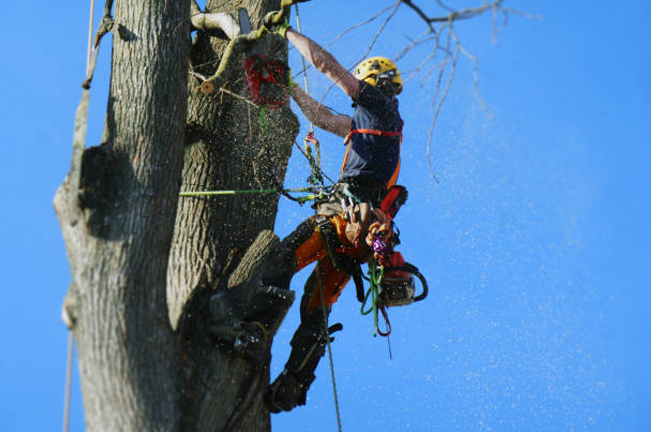
What is Pruning?
Pruning is the deliberate removal of specific branches or stems to enhance tree structure and health. The key objectives of pruning include shaping young trees, removing damaged or diseased parts, and improving aesthetics or functionality in urban and landscaped areas. Pruning is a valuable tool for promoting healthy growth patterns and extending the life of trees.
There are different types of pruning based on the tree’s needs:
- Formative Pruning: Shapes young trees for strong structure.
- Corrective Pruning: Removes damaged or diseased branches.
- Maintenance Pruning: Controls the size and shape of mature trees for safety and aesthetics.
How Pruning Improves Tree Health
Pruning plays an essential role in maintaining a tree’s health by:
- Removing Diseased, Damaged, or Dead Branches: This minimizes the spread of pests and diseases.
- Encouraging Strong Growth: By focusing energy on essential branches, young trees develop better structures.
- Improving Light Penetration and Air Circulation: This reduces the risk of fungal growth and supports photosynthesis.
Best Practices for Effective Pruning
To achieve the best results from pruning, it’s important to follow key guidelines:
- Tools and Techniques: Use the correct tools, such as hand pruners, pole saws, and loppers, to make clean cuts. Sharp, sanitized tools prevent infections.
- Timing: Pruning should be done during a tree’s dormant season, usually in late winter, to minimize stress and avoid disrupting growth cycles.
- Avoid Common Mistakes: Over-pruning or cutting branches too close to the trunk can damage the tree and hinder its ability to heal.
The Science Behind Tree Thinning

What is Thinning?
Thinning is the selective removal of trees in a densely populated area to reduce competition for resources. This practice is commonly used in forests and managed landscapes to improve the health and growth of the remaining trees.
Thinning is essential in both forest and urban settings, as it ensures that trees have enough access to sunlight, water, and nutrients to grow vigorously. It also prevents overcrowding, which can lead to stress and increased susceptibility to diseases and pests.
Benefits of Tree Thinning
Thinning offers several critical benefits, including:
- Enhanced Growth and Resilience: By reducing competition, the remaining trees can grow stronger and healthier.
- Improved Wildlife Habitat and Biodiversity: Thinning creates a more diverse ecosystem that supports a variety of species.
- Reduced Risk of Forest Fires and Disease Spread: Thinning decreases the amount of combustible material and enhances forest health, lowering the chances of fires and the spread of diseases.
Thinning Techniques
There are two primary thinning methods:
- Selective Thinning: This involves carefully choosing which trees to remove based on their health, size, or species.
- Systematic Thinning: Trees are removed at regular intervals without regard to individual characteristics. Determining thinning intervals is crucial to forest health. Thinning too often or too little can negatively impact tree growth and ecosystem stability.
Synergy Between Pruning and Thinning for Optimal Tree Health
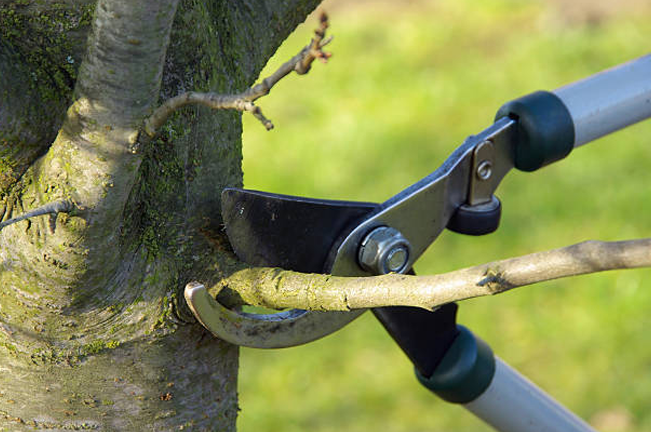
Complementary Benefits
Pruning and thinning complement each other in supporting tree vitality. Pruning focuses on individual tree health, while thinning improves the overall ecosystem by reducing competition. Together, these practices create an environment where trees can thrive, promoting longevity, root development, and canopy balance.
Application in Different Tree Types and Environments
The techniques of pruning and thinning vary depending on the type of tree and the environment in which they grow. Forest trees may require more frequent thinning, while urban and orchard trees may benefit from regular pruning. Each species and growth stage requires different approaches to maximize health and productivity.
Tools and Equipment for Safe and Efficient Pruning and Thinning
Essential Tools for Pruning
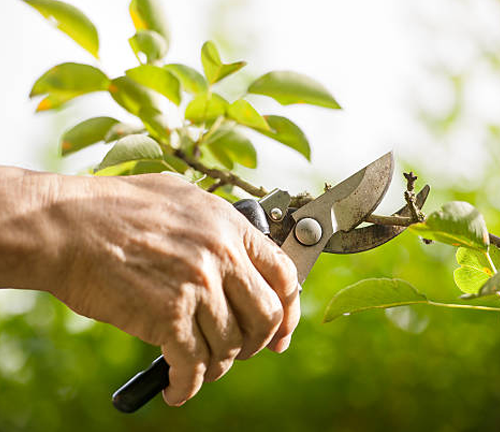

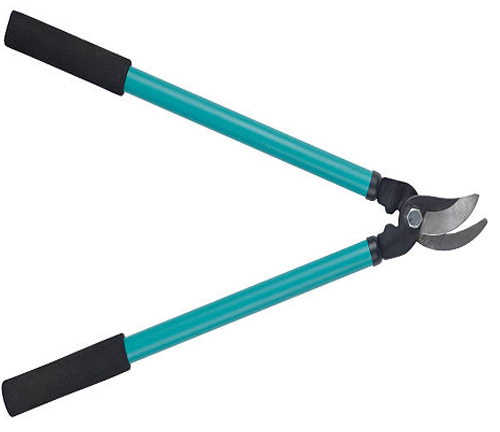
For effective pruning, tree managers need specialized tools:
- Hand Pruners for small branches.
- Pole Saws for higher limbs.
- Loppers for thicker branches.
Safety gear, such as gloves, protective eyewear, and helmets, is essential when performing large-scale operations.
Thinning Equipment and Techniques
Thinning often requires more robust equipment like chainsaws and mechanized options. Ensuring safety during thinning operations is vital, with proper training and protective gear, such as chainsaw chaps and hard hats, being non-negotiable. Hazard assessments should be conducted before any major thinning project to avoid accidents.
Pruning and Thinning for Forest Management and Urban Settings
Forest Management
In forests, pruning and thinning are crucial for promoting sustainable practices. By removing weaker trees, forest managers encourage healthier growth and increase the forest’s resilience to environmental pressures. These methods also aid in timber production by allowing selected trees to reach their full potential.
Urban Forestry
In urban settings, trees require management for safety and aesthetic reasons. Pruning helps prevent branches from interfering with buildings and utility lines, while thinning reduces the chance of tree failure in storms. Maintaining a healthy urban canopy also provides numerous environmental benefits, such as improved air quality and reduced urban heat islands.
Timing and Seasonality: When to Prune and Thin for Best Results
Optimal Timing for Pruning
The best time to prune most trees is during the dormant season (late winter to early spring). Pruning at this time minimizes stress and helps trees heal faster. Understanding a tree’s growth cycle is critical for strategic pruning, ensuring that the tree is not pruned during periods of high sap flow or growth spurts.
Thinning Cycles
Thinning intervals should be planned based on the growth stages of the forest. Young forests may require more frequent thinning, while mature forests benefit from less frequent interventions. Proper timing ensures that thinning efforts are effective in promoting long-term forest health.
The Role of Pruning and Thinning in Climate Resilience
Improving Tree Resilience to Climate Change
As climate change intensifies, pruning and thinning become more essential. These techniques help trees adapt to environmental stressors such as drought, pests, and diseases. By managing tree density and improving airflow, trees become better equipped to handle extreme weather conditions.
Enhancing Forest Resilience
Thinning forests to the appropriate density also mitigates the risks associated with wildfires and other climate-related challenges. A well-managed forest is more likely to withstand extreme events and continue to provide ecosystem services such as carbon sequestration and habitat provision.
Common Challenges and Solutions in Pruning and Thinning
Challenges in Large-Scale Operations
Large-scale thinning and pruning operations often face challenges, such as managing overgrown forests or a lack of resources. To maintain biodiversity while thinning for timber production, careful planning and species consideration are required.
Mitigating the Risks of Improper Pruning
Improper pruning, such as over-pruning or cutting at the wrong time, can harm trees and stunt their growth. It’s essential to follow best practices and seek professional guidance when managing large-scale pruning projects to avoid these risks and ensure long-term tree health.
Frequently Asked Questions (FAQs)
- What is pruning, and why is it important for trees?
Pruning involves selectively removing branches to improve tree structure, health, and appearance. It helps prevent disease, improves air circulation, and promotes strong growth. - What is thinning, and how does it differ from pruning?
Thinning refers to removing entire trees or parts of a tree to reduce density and competition for light and nutrients, while pruning focuses on trimming parts of a single tree. - When is the best time to prune or thin trees?
The ideal time for pruning is during the tree’s dormant season (late winter or early spring). Thinning can be done as needed, depending on forest management goals. - How do pruning and thinning improve tree health?
Pruning removes dead or diseased branches, reducing the risk of infection, while thinning helps trees access more sunlight and resources, leading to healthier growth. - What are the benefits of thinning in forest management?
Thinning reduces competition between trees, promotes biodiversity, and enhances the overall health and productivity of the forest. - What tools are commonly used for pruning and thinning?
Pruning shears, loppers, saws, and chainsaws are used for pruning, while thinning often requires chainsaws and larger forestry equipment. - Can improper pruning harm a tree?
Yes, incorrect pruning can damage a tree’s structure, make it more vulnerable to pests and diseases, and stunt its growth. - What are the common techniques for thinning a forest?
Common thinning techniques include selective thinning, row thinning, and crown thinning, each with different purposes based on forest management goals. - How does pruning contribute to fruit and flower production in trees?
Pruning encourages healthier growth and allows the tree to focus its energy on producing higher-quality fruits and flowers. - How often should trees be pruned or thinned?
The frequency of pruning depends on the tree species and its condition, but generally, it’s recommended every 3-5 years. Thinning schedules depend on the forest management plan. - What are the environmental benefits of thinning and pruning?
These practices reduce fire risk, enhance forest regeneration, and maintain wildlife habitats by promoting a healthy ecosystem. - How can I tell if my tree needs pruning?
Look for dead, diseased, or crossing branches, as well as areas where growth is overcrowded or weak. These are signs that pruning is necessary. - What is crown thinning, and how does it help trees?
Crown thinning reduces the density of the canopy, allowing more light and air to penetrate through the tree, which improves health and reduces the risk of wind damage. - Are there specific safety precautions to follow when pruning or thinning trees?
Yes, it’s important to wear protective gear, use proper tools, and, in some cases, consult a professional arborist to avoid accidents or tree damage.

Gilbert Griffin
Forestry AuthorGilbert Griffin is a forest management expert specializing in sustainable practices, forest health, conservation, and land management. With extensive knowledge in pest control, disease management, and habitat restoration, Gilbert develops strategies to preserve forest ecosystems and biodiversity. Passionate about the natural world, Gilbert adapts to changes in forest management and stays updated through continuous learning. Gilbert also provides seasonal advice to optimize forest care throughout the year.


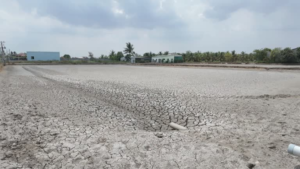
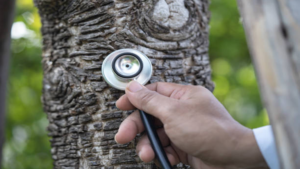
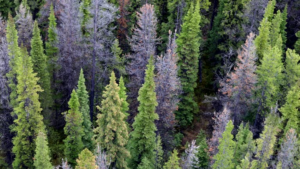
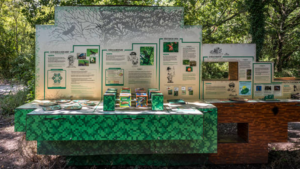
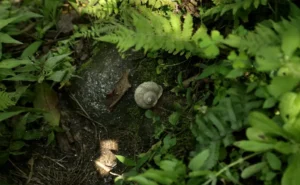
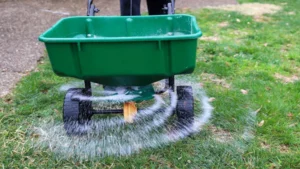



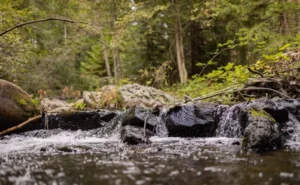
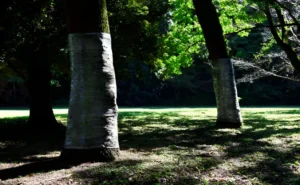
Leave your comment